The banana plant
is not a tree.
| It is a giant herbaceous plant with an apparent trunk that bends without breaking (see Booklet No. 2, page 10). | 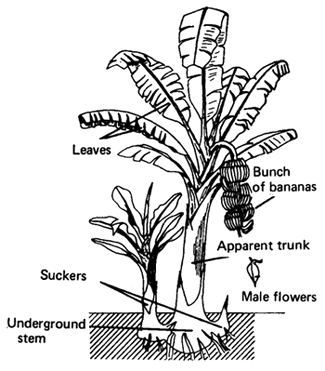 |
A banana plant
| The banana has an underground stem with adventitious roots (see Booklet No. 1, page 25). It is full of food for the plant. | |
| Alongside the main stem, it has other stems called suckers. These stems grow into banana plants. | |
The banana plant produces its fruit and dies. Another sucker replaces it. | |
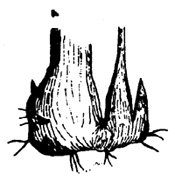 | An underground stem with suckers |
The banana plant has large leaves
closely rolled up one over the other.
Together they look like a trunk,
but they form only an apparent trunk.

Banana leaf
| Inside it there is a bud which produces leaves. After 7 or 8 months, when some 30 leaves have grown, the bud produces flowers. | 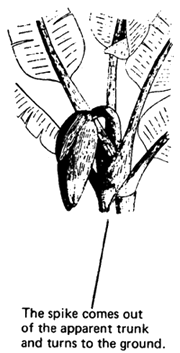 |
The flowers of the banana plant form a large spike (see Booklet No. 3, page 6). It turns downward, to the soil and opens. It bears male and female flowers. |
You can see:
• the female flowers
pressed closely together
in the shape of hands.
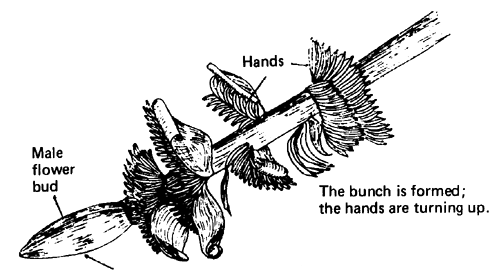
• a red bud
at the end of the spike
containing the male flowers;
the male flowers die quickly
and the bud slowly becomes smaller.
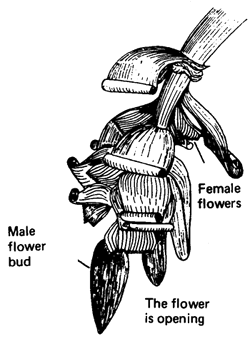
The banana plant yields fruits.
These fruits are long in shape,
with yellow or green skin.
The spike produces many bananas.
The bananas on one spike
are called a bunch.
On this bunch,
the bananas are clustered in several hands.
The flesh of a banana
is light in colour, sweet and soft.
In the middle of the fruit
you can see little black specks;
these are the seeds,
but they will not germinate
(see Booklet No. 1, page 8).
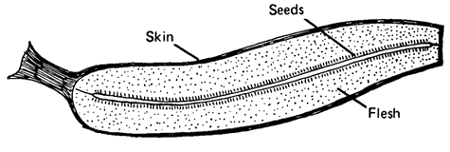
Section of a banana